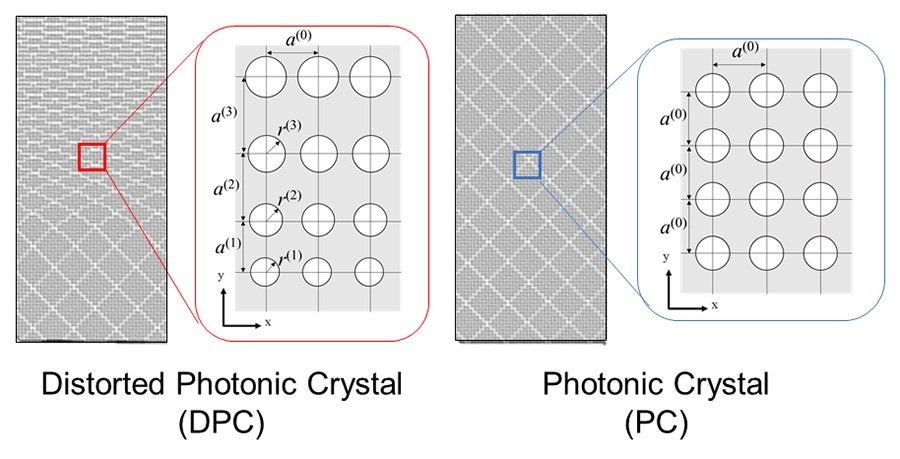A group of researchers worked together to modify light’s behavior as though it were under the effect of gravity. The discoveries, published on September 28th, 2023, in the journal Physical Review A, have far-reaching consequences for the worlds of optics and materials research, in addition to their relevance for developing 6G communications.
 A conceptual image of the distorted photonic crystal and photonic crystal. Image Credit: K. Kitamura et.al.
A conceptual image of the distorted photonic crystal and photonic crystal. Image Credit: K. Kitamura et.al.
Albert Einstein’s theory of relativity has long proven that gravitational fields can redirect the route of electromagnetic waves, including light and terahertz electromagnetic waves. Scientists have anticipated that deforming crystals in the lower normalized energy (or frequency) zone might replicate the effects of gravity, i.e., pseudo gravity.
We set out to explore whether lattice distortion in photonic crystals can produce pseudogravity effects.
Kyoko Kitamura, Professor, Graduate School of Engineering, Tohoku University
Photonic crystals have unique qualities that allow scientists to alter and control the behavior of light within crystals, acting as ‘traffic controllers’ for light. They are made by assembling two or more distinct materials with variable ability to interact with and slow down light in a consistent, repeating pattern on a regular basis. Pseudogravity effects caused by adiabatic variations have also been seen in photonic crystals.
Kitamura and her colleagues altered photonic crystals by adding lattice distortion: a progressive deformation of the regular spacing of elements that disturbed protonic crystals’ grid-like layout. The photonic band structure of the crystals was altered, resulting in a curved beam trajectory in-medium, similar to a light ray passing past a huge astronomical body such as a black hole.
They used a silicon-distorted photonic crystal with a primal lattice constant of 200 micrometers and terahertz waves. Experiments effectively proved the deflection of these waves.
Kitamura added, “Much like gravity bends the trajectory of objects, we came up with a means to bend light within certain materials.”
Masayuki Fujita, Associate Professor from the Osaka University, added, “Such in-plane beam steering within the terahertz range could be harnessed in 6G communication. Academically, the findings show that photonic crystals could harness gravitational effects, opening new pathways within the field of graviton physics.”
Journal Reference:
Nanjyo, K., et al. (2023) Deflection of electromagnetic waves by pseudogravity in distorted photonic crystals. Physical Review A. doi:10.1103/PhysRevA.108.033522